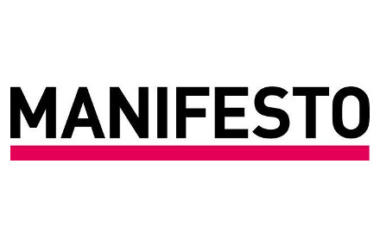Agile methods don’t just help organisations react more quickly to changes in the marketplace, but to changes in people too, writes Jim Bowes.
Work is a major part of most people's lives, but it’s not everything. People move in and out of relationships, start families, get older and follow new ideas, so that over the years, what they want from work will change. As our team at Manifesto grew from just one full-time employee to over 50, we faced a major challenge. Knowing that people make a greater difference when they’re passionate about what they do, how could we stay in touch with their plans, hopes and dreams, and help them achieve the things they were interested in?
Autonomy through Agile
Luckily, we’d built our agency around Agile principles, so we were already equipped for dealing with change. Agile is a project management methodology which puts an emphasis on the interactions between people, rather than processes. It aims to free individuals to collaborate together in small, multi-disciplinary, self-organising teams, getting new products and campaigns to market quickly so they can be tested, evaluated and improved upon.
In his 2011 book Drive: The Surprising Truth About What Motivates Us, Daniel H. Pink identifies three key motivating forces in people’s working lives: autonomy, mastery and purpose. By favouring collaborative working over traditional top-down management techniques, by forcing people to decide for themselves how to tackle their tasks and how their efforts and skills are directed, Agile fosters an autonomous approach for both teams and individuals.
We’ve delivered introductions to Agile ways of working to hundreds of charity staff in the UK, helping them to build more effective teams through collaborative methods which promote a sense of autonomy.
Mastery through continuous improvement
One of the key prescriptions of Agile methods is regularly taking stock of where you’re going and how you’re going to get there. This provides opportunities to identify where your ways of working can be improved, what skills, tools and techniques need to be learned. For individuals in Agile teams, this maps out a path towards expertise and mastery in their field, one which is exposed to constant feedback from consumer behaviour and market trends.
At Manifesto we use retrospectives at multiple levels - project, team, company - to help people identify opportunities to grow. This has given rise to open-source sprint weekends, access to in-depth training courses, conference visits, and experimentation with the latest in consumer technology. But it’s also helped people develop in non-technical directions, from helping host our annual pub quiz for charity digital teams, to taking part in a sponsored cycle from London to Brighton to raise money for British Heart Foundation.
Helping people flourish in large organisations means more than just implementing Agile methods at a project level. You need to give people a chance to direct their own learning and development, while contributing to the direction of the organisation. Carving out the space and time required for this means committing to the Agile principle of valuing people and interactions over processes and tools, often a significant cultural shift.
Purpose-led organisations
In 2015 Manifesto took time to reflect on our own direction of travel. We brought the whole company together to explore our behaviours and values through a Lego Serious Play workshop. During the day we collectively generated a new set of guiding principles which ultimately fed into our new core story: collaborating with exceptional organisations to drive positive change.
Getting everyone involved in articulating our purpose was vital for keeping people engaged as we continued to grow. Charities and non-profit organisations often come with purpose baked-in. Their goals, the changes they want to see in the world, are powerful motivators for their staff. Nevertheless, this purpose (or core story, as we like to call it) has to be well-articulated and permeate the organisation from the chief executive to the front-line volunteers. It needs to feed into the vision for every project and initiative, so that people know what they’re trying to achieve and feel compelled to work towards it.
Jim Bowes is chief executive of Manifesto
Related articles










